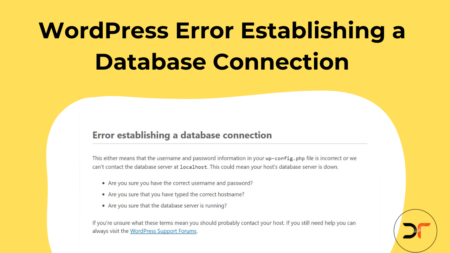Table of Contents:
- Introduction on how to setup google analytics in WordPress
- What Can You Track with Google Analytics for WordPress?
- Real-time Activity
- Engagement
- Acquisition
- Monetization
- Demographics
- Retention
- How to Setup Google Analytics for WordPress
- How to Set Up Google Analytics with a WordPress Plugin
- Final Words
Introduction
Do you want to keep track of your website activity? Do you know how to set up Google Analytics in WordPress and how it can help you?
Have you ever thought about which pages of your website have the most traffic, what campaigns brought them there, and which pages of your website convert the best?
Google Analytics helps you to get all this information and more. It can be done by just installing a Google Analytics plugin on your WordPress website, and it will help you to start collecting data immediately. Adding Google Analytics to your website with the help of a plugin is an easy process.
However, if you don’t want to install a plugin for this purpose, you can use other ways of integrating Google Analytics into your website.
In this blog, we’ll help you how to setup Google Analytics in WordPress in two different ways. You can follow the methods in this blog to uncover insights about your website visitors. It can be helpful to learn about your audience well, increase conversions, and increase user experience.
What Can You Track with Google Analytics for WordPress?
It can be helpful to track many interactions between your website and its visitors. Whether you are looking for details about who is visiting your website, user activities on your website, or how long they are staying on your website pages. Google Analytics helps to provide the report you need.
Let’s talk about some of the features you can expect from Google Analytics:
Real-time Activity
Real-time reports are helpful to check current activity on your website, including where visitors enter your website and what actions they take on your website. You can also check how users get to your website, the visited pages, and whether they are converting. This report helps to monitor the immediate results of any campaign, social media post, and real-world event.
Engagement
An engagement report is helpful in understanding the interaction of users on your website. It helps to see page views, scrolling activity, time spent on the page, interactions with website media, and other important events. Google Analytics provides user activity by sessions.
This report helps to track conversion rates. You can compare the results with your goal and understand which CTAs are working for your website. You will also learn more about successful CTAs and landing pages on your website and what keeps your visitors more engaged.
Acquisition
Acquisition reports are helpful in understanding where visitors are coming from. This information is helpful when you want to set up marketing campaigns because it can show you exactly what is working best for your acquired visitors. It will also tell you which users are new and which are returning.
Monetization
Monetization reports are helpful for tracking the revenue from purchases, advertisements, and subscriptions on your website. It will also show how users move through the checkout process and engage with your product pages.
Demographics
The demographics report is helpful in understanding who your visitors are. It shows users by age, location, language, gender, and topics of interest.
Retention
Retention can be helpful in monitoring how well your website is retaining visitors. Moreover, it helps to know how often users return to your website after their first visit and how long they stay on it. You can also check retention by cohort. A cohort means a group of users that share a characteristic, like the date of their first session.
Also Read: How to Setup Google Adsense in WordPress
How to Setup Google Analytics in WordPress
In order to add Google Analytics to your WordPress website, you can either try with a plugin or with a manual approach. We will tell you both the methods. Let’s start with the plugin.
Whichever method you want to go with, ensure that you have an active Google Analytics account. To sign up for Google Analytics account, you must create a Google account first. However, if you already have a Google account, you are good to start because that’s the only way you can use Google Analytics for your website.
Sign in to your Google account, and then go to Google Analytics sign-up page and click on Start measuring.

Complete all the necessary details on the setup page, and fill in the necessary information. Your Account Name will serve as your Google Analytics profile name for your website. You can choose your name, but we recommend using your business name.
Next, you need to check the preferred boxes under Data Sharing Settings to control how you share your data with Google and click next.
Under Property Setup, give a name for your first Google Analytics property. You can also use your website domain name and click next.
Finally, under About your business, you can fill in all the additional information about your website. This section is optional. Click Create to complete your setup.
Now you will go to the analytics dashboard. On this screen, under Choose a platform. Click Web to track your website.

You will need to set up a data stream, which is a source of data from any website or app. Fill the required fields and click Create stream. This will provide you with a measurement ID, a string of characters that you can use for sending your website tracking data to Google Analytics. In case you choose to go with a plugin, you may need to add this information to the plugin, so it is better to keep this tab open.

Now, if your Google Analytics account is ready, you need to learn how to link it with your WordPress site with a plugin.
How to Set Up Google Analytics with a WordPress Plugin
Setup is dependent totally on the Google Analytics plugin you are using. Whichever plugin you choose, the process will be fairly simple for every plugin. For example, we are going to review how to set up the ExactMetrics plugin.
First, you will need to install and activate ExactMetrics on your website. Once it’s done, select the new ExactMetric option from your WordPress dashboard and click on Launch Setup Wizard.

Go through the setup screens until you are asked to sign in to Google and grant permissions to the plugin. Once you are on the Connect Google Analytics to Your Website screen, you need to choose the previously created view and click on Complete Connection.
After going through some additional screens, you will be ready to use Google Analytics with WordPress. You can check your analytics in ExactMetrics > Reports.

You may need to provide tracking codes in some plugins in case they don’t offer the same level of automation. You will find this tracking information in your Google Analytics admin tab; once you are in the admin tab, choose Data Streams under the desired account and property.

Now click on the data stream, and you will see your Measurement ID available in the top right corner. You will also see the Global Site Tag, and it can be the block of code helpful in adding analytics to your website in the <head> section of your HTML. The easiest way of adding this script to your HTML is with the Insert Headers and Footers plugin. It will let you add tracking code without directly modifying your files which can break your site.
How to Setup Google Analytics Without a WordPress Plugin
Those who don’t want to use a plugin and know how to edit WordPress theme files directly can use this method. Before doing this, back up your WordPress website in case something goes wrong during the process.
Since this method also needs you to change theme files, we suggest you make edits to your child theme so that you can update your parent theme without losing any changes.
Go to the Google Analytics admin tab to get the tracking code. Go to Data Stream once you are in the admin tab. Choose the data stream you want and then scroll down to Tagging Instruction. Go to Global Site Tag and copy the code.

Now paste the code into your active theme’s header.php file. Edit the file, paste your tracking code just above the closing </head> tag, and save changes.
This code will be helpful in sending tracking information from your website to Google Analytics.
Final Words
Google Analytics offers you insights and data that can be helpful for you to improve your website greatly. You can get more information about your website visitors and discover more about them so that you can modify your content according to their needs.
Installing Google Analytics on your WordPress website is quick and easy. It will take a few minutes to do it. With the help of this, you can start collecting the information you need for improving user experience and increasing conversions rate on your WordPress website.










